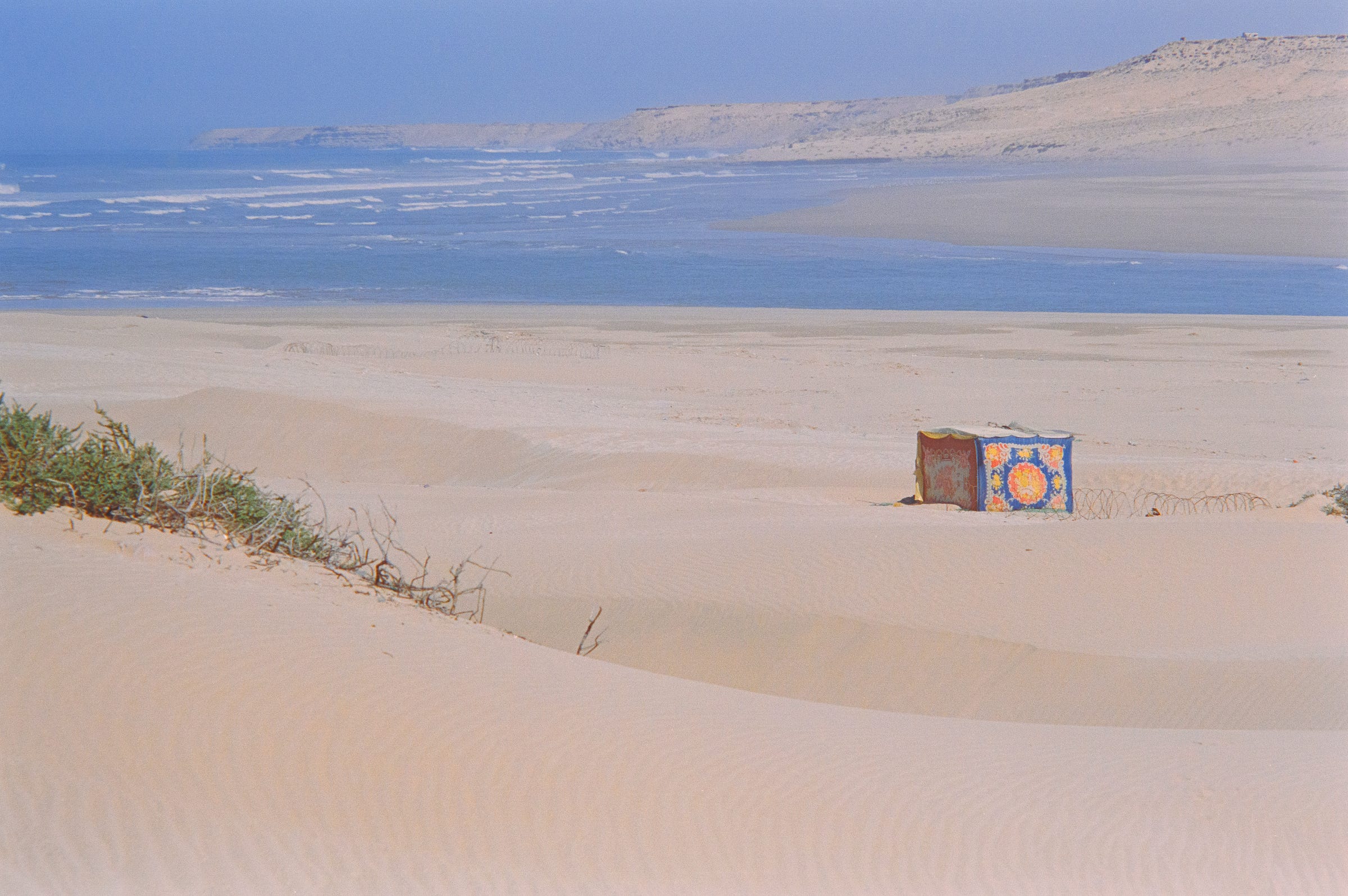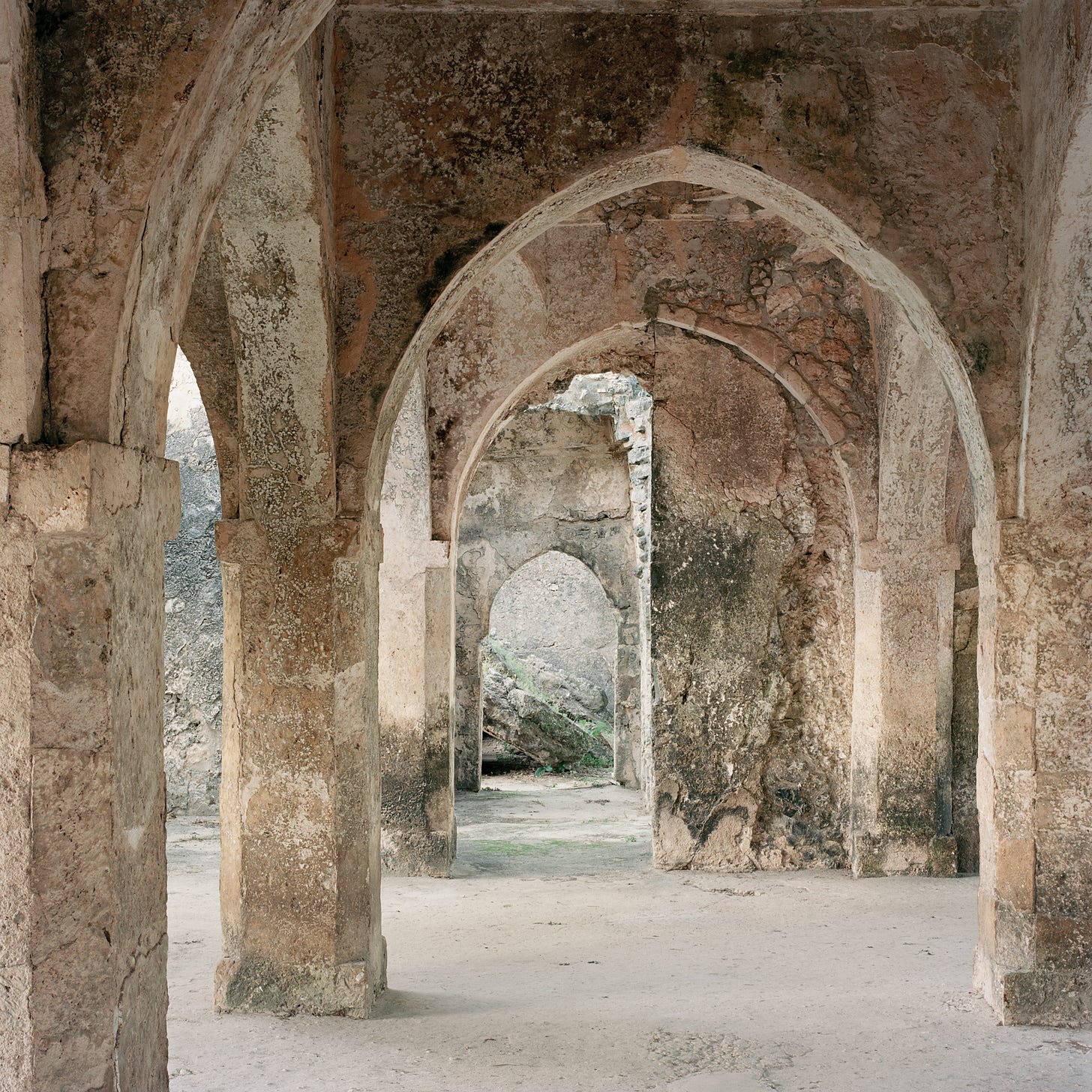The box-shaped tent catches my eye. Placed close to the edge of the frame, it is a human-owned insertion in the otherwise pastel-coloured expanse of sand and ocean. It is also, arguably, the element that gives the photograph a fissure of narrative. With what fondness or fatigue does the tent dweller stare at the confluence of dune and water? How often has the tent been moved only to be returned to a similar spot? The view, otherwise, is placid, which is not to say the photograph is mute.
— Emmanuel Iduma
“I aim to showcase the beautiful landscape and culture of the Sahara.”
This photograph was taken in Tan-Tan region, southern Morocco. It shows the mouth of the 1100 km long River Draa that flows from the High Atlas mountains to the Atlantic ocean.
I took this photograph last January when I was exploring this region looking for saharan nomadic communities that could be affected by water shortage and the effect of the climate crisis in general.
It represents South Morocco's beautiful but endangered landscape due to climate change; it also gives a sense of isolation which is an embodiment of the reality of this overlooked region. This image is part of my ongoing long term project Fading Dunes, and it shows the meeting points between river, ocean and dunes, making this place in the world unique.
Using photography as a medium is one of the strongest tools to bring awareness to an issue, helping overlooked communities to engage in solution-based projects and unusual perspectives. Through Fading Dunes, I aim to showcase the beautiful landscape and culture of the Sahara, raise awareness about the effects of the climate crisis on the Saharan community and environment, highlight the lost traditions of the nomadic way of life that have disappeared due to urbanization, and establish connections between communities in southern Morocco and global environmental and cultural foundations.
— Yassine El Attar
About Yassine El Attar
Yassine El Attar was born in Laayoune, southern Morocco. He works on long-term human and landscape-based photo-projects concerned with South Moroccan environmental and socio-economic issues. More of his work can be seen on his website and Instagram.
LAST WEEK — “Kilwa Kisiwani Ruins” by Christopher Littlewood
Kilwa Kisiwani, an island and former Swahili settlement, sits just off the Tanzanian coast. Built in the 9th century, Kilwa was a key trading port between the interior of Africa and Arabia, India and China. Following colonial expansion by the Portuguese, the city's decline ensued, and Kilwa fell into ruin. Within its urban fabric were palaces, public squares, mosques and burial tombs. This photograph depicts the interior of the Great Mosque with its pillars and vaulted ceiling.
This is the 128th edition of this publication. The newsletter also read on web (best for viewing images), and via the Substack iOS/Android apps.
TENDER PHOTO is a collaborative digital archive and publishing platform of contemporary African photography, edited by Emmanuel Iduma. Our aim is to use photography to engage with life on the African continent. We publish narratives about the people, places, and events pictured in photographs, contributing to nuanced and layered perceptions.
Every Wednesday we feature a photograph, a short caption about it, and a statement from the photographer. Last year, we published commentaries or photo-essays in response to photographs previously featured on the newsletter, including CORRESPONDENCES, CONCORDANCE, KINDRED, INDEX, and AFFINITIES. Our ongoing Friday series is dedicated to the 5 photographers featured in Process Projected, Amsterdam. See last week’s feature on the work of Lidudumalingani here.
Thank you for reading. If this newsletter was shared with you, consider subscribing, or forward to a friend. Please whitelist the newsletter to ensure you never miss it.




